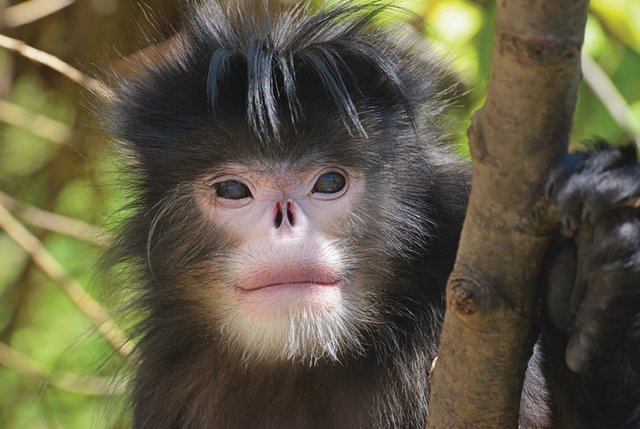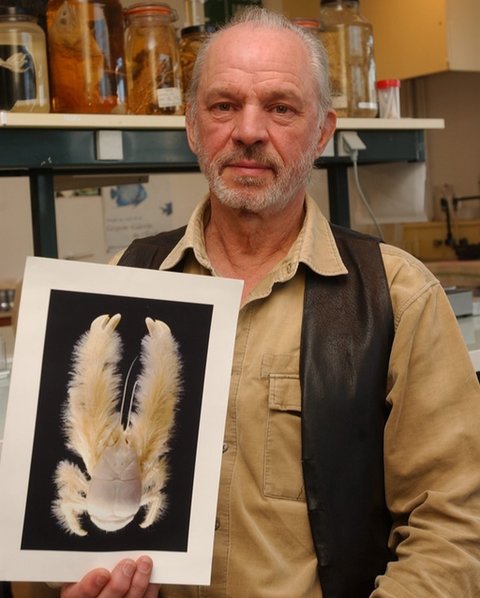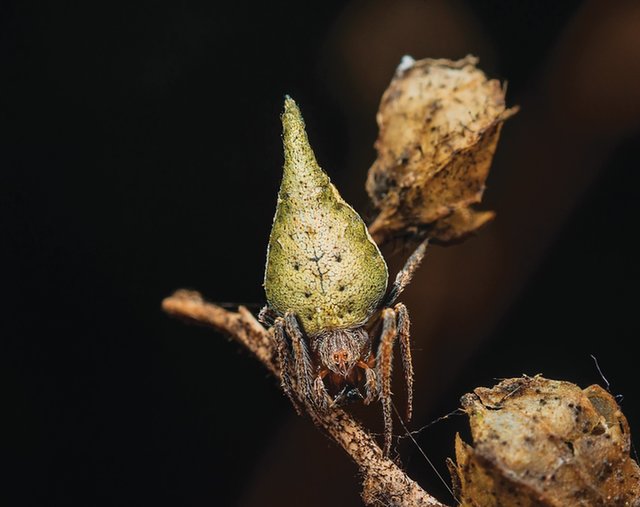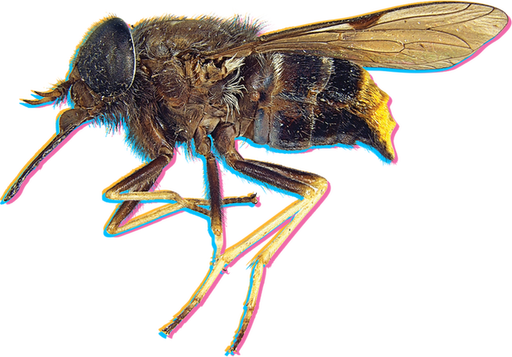Themountainairischilly.SilencehangsamongtheleavesandspreadsthrougharemoteHimalayanforestlikeafog.Thescientistsstandperfectlystill,peeringupintothetreetops,hopingtosee something.
Suddenly,theforeststartstosoundlikefryingbacon.It’srainhammeringtheleaves.Thereisstillnosignofthemysteriousmonkeythathadluredthescientiststotheforest.Theyturntogo.Butthen,asneezecomesfromthebranchesabove.Thenanother.Andanother.Asnub‑nosedmonkeywithupturnednostrilssneezesandsnortsastheraindripsintoitsnose.Anewspecieshasjustbeen discovered!

snub‑nosed monkey
Where'sWaldo?
Lotsoflivingthings,bigandsmall,livetheirliveswithouteverbeingnoticedbyhumans.Sometrees,flowers,microbes,insects,andevenpigs,whales,andmonkeyscangounnoticedforcenturies!Someofthesenewspecies,likethesnub‑nosedmonkey,liveinremoteplacesthatarehardtogetto.Butmanyarefoundclose by.
There’salotofbiodiversityonEarth.Scientistshavecollected,studied,andputintoclassificationsmillionsofthem.Still,therearemanymoreouttherethathaveyettobediscovered.Andanyonecandiscover them.
Scientiststhinktheremaybeasmanyas10 millionspeciesonEarth.Sofar,we’veonlyidentifiedabout 1.3 million.
Wait,WhatIsThat?
Astreakofmovementcatchesyoureye.Aflashoforangelandsonabranchinyourbackyard.Youtakeacloserlook.It’sgotsixlegsandwingsandisthesizeofyourpinky.It’saninsect,butit’slikenothingyou’veeverseenbefore.Haveyoudiscoveredanewspecies?Maybe,maybe not.

Thisscientisthelpeddiscoveranewspeciesofcrabcalledtheyeti crab.
There’saspecificprocessforhowtoidentifyandnameanewspecies,anditcantakeyears.First,aspecimenhastobecapturedandcollected.Thenithastobestudiedbyexpertstomakesureitdoesn’talreadybelongtoaknownspecies.Theycompareittosimilarspecies.Ifitlookslikesomethingthathasbeendocumented,adeeperlookmay beneeded.ScientiststakeapeekattheDNAofthenewlydiscoveredspecimenandcomparethattotheDNAofthesimilarspecies.Ifitisnotamatch,thenthefun begins.
Scientistsnextwriteupadetailedreport.Itincludesprecisedescriptions,labresults,photographs,anddrawings.Italsocallsforanewname.Allofthisissubmittedtoascientificjournalwhereexpertsfromaroundtheworldcanlearnaboutit.Iftheseexpertsagreethatthisnewspeciesisvalid,thenitofficiallybecomesanew species.
What'sin aName?
Fromthesortinghatspider(Eriovixiagryffindori), whichlooksjustlikeatinysortinghatintheHarryPotterseries,totheBeyoncéfly (Scaptiabeyonceae),whichhasagoldenbackside,everyknownspeciesontheplanethasanofficialtwo‑partscientific name.
Thissystem,calledbinomialnomenclature,hasbeenaroundsincethe1700s.SwedishscientistCarlLinnaeusdesigneditsothatsomeonefromonepartoftheworldcouldshareinformationaboutaspecificspecieswithapersoninanotherpartoftheworld,andbothwouldknowexactlywhattheyweretalking about.
sortinghat spider



Beyoncé fly
Thefirstpartofthenameiscalledthegenus.It’sanameforasmallgroupofrelatedorganisms.Thesecondpartisauniquedescriptionwordthatidentifiesthespecies.It’scalledthespecificepithet.Forexample,threesmallandroundspeciesoffungusbeetlesarenamedGelaebaen(sounding like“jelly bean”), Gelae balae (“jelly belly”),and Gelae donut (“jelly doughnut”).ThegenusisGelae.It showsthattheyarerelated.Together,thegenusplusthespecificepithetisthefullscientificname.IftheLatinistoohardtosay,peopleoftenjustusethecommonname,likethe“jellybelly” beetle.